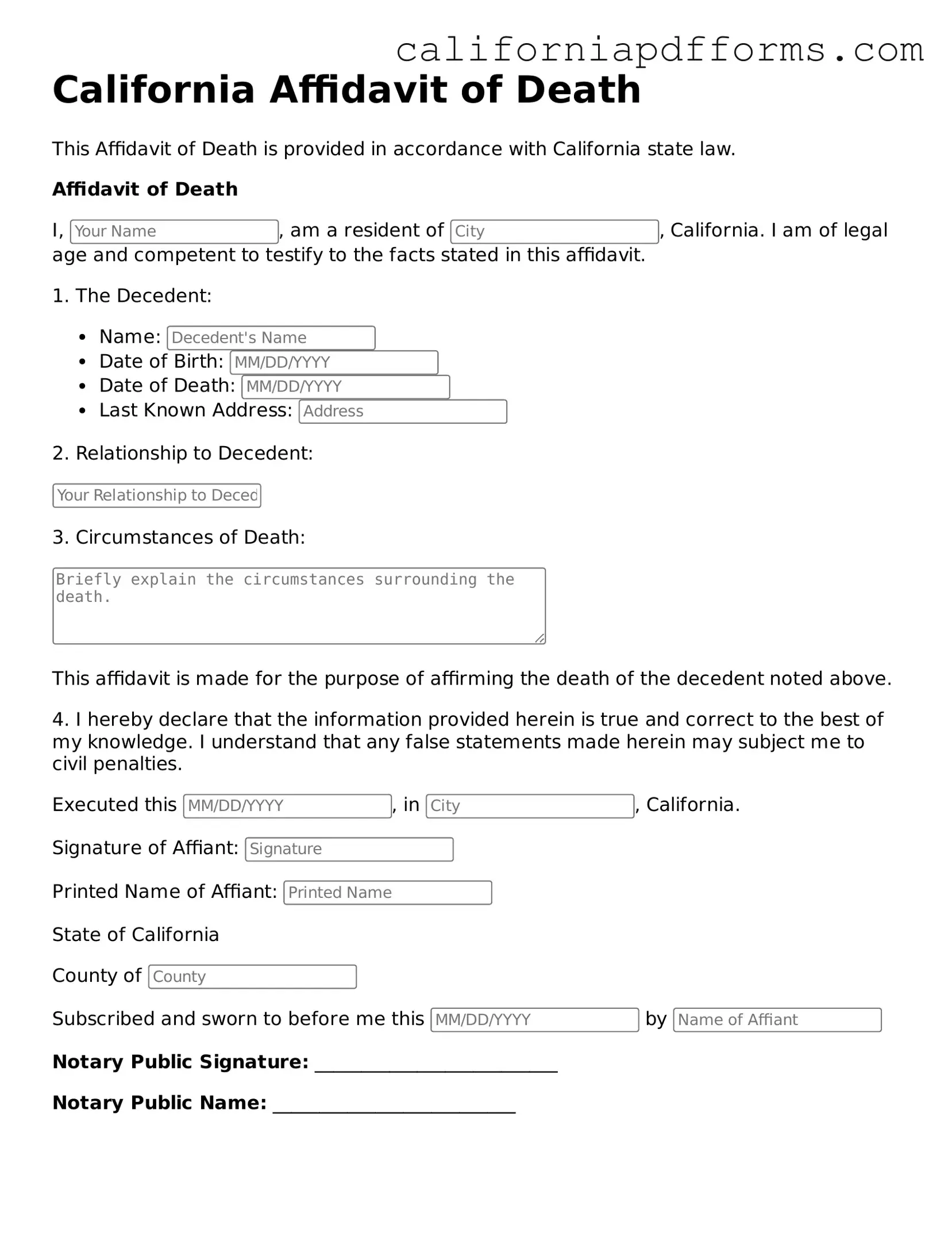The California Affidavit of Death form is a legal document used to declare the death of an individual. It serves as a formal statement that can be used to transfer property or settle the estate of the deceased. This affidavit is typically filed with the county recorder's office where the property is located or where the deceased resided.
Who can complete the Affidavit of Death?
The Affidavit of Death can be completed by an interested party. This includes individuals who have a legal interest in the deceased's estate, such as heirs, beneficiaries, or personal representatives. It is important that the person completing the form has accurate information regarding the deceased.
The form requires specific information, including:
-
The full name of the deceased.
-
The date of death.
-
The place of death.
-
The name and address of the affiant (the person completing the form).
-
A description of the property affected by the affidavit.
Additional details may also be necessary, depending on the circumstances surrounding the death and the estate.
Is a death certificate needed to file the affidavit?
Yes, a certified copy of the death certificate is generally required when filing the Affidavit of Death. This document serves as proof of the individual's death and is often necessary for the affidavit to be accepted by the county recorder's office.
Where should the Affidavit of Death be filed?
The Affidavit of Death should be filed with the county recorder's office in the county where the deceased owned property or resided at the time of death. This ensures that the transfer of property is officially recorded and recognized.
Are there any fees associated with filing the affidavit?
Yes, there are typically fees associated with filing the Affidavit of Death. These fees can vary by county. It is advisable to check with the local county recorder’s office for the specific fee schedule and payment methods accepted.
Can the Affidavit of Death be used for any type of property?
The Affidavit of Death is primarily used for transferring real property, such as land or homes. However, it can also be utilized for personal property in certain cases. It is important to consult with a legal professional to determine if the affidavit is appropriate for specific assets.
What happens if the Affidavit of Death is not filed?
If the Affidavit of Death is not filed, the transfer of property may be delayed. This can complicate the settlement of the deceased's estate, potentially leading to legal disputes among heirs or beneficiaries. Filing the affidavit helps to clarify ownership and facilitate the distribution of assets.
Can the Affidavit of Death be revoked or amended?
Once filed, the Affidavit of Death cannot be revoked or amended easily. If there are errors or changes needed, it may be necessary to file a new affidavit or take further legal action. It is advisable to ensure all information is accurate before submission to avoid complications.
